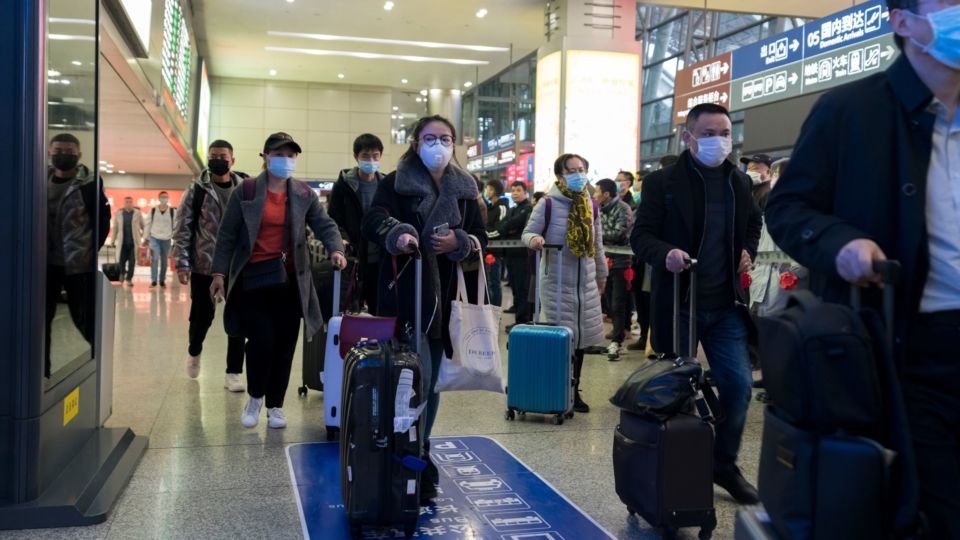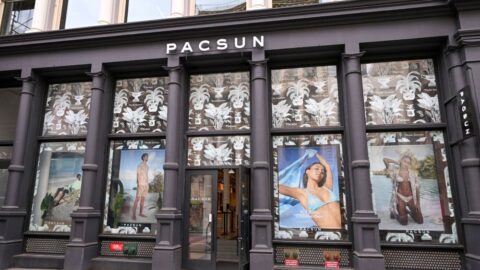The impact of factory closings in China is hitting the U.S. and world markets as the coronavirus outbreak continues. The Dow Jones industrial average sank by more than 1,000 points, or 3.6%, on Feb. 24, while the Nasdaq index dropped more than 3.7%, according to The Washington Post. Retailers are being hit on both the consumer-facing and sourcing fronts: Chinese store closures are creating immediate challenges, while supply chain issues are just beginning to be felt.
“Any retailer or brand that relies on China as both a production and consumer market is being especially impacted by the shuttering of both storefronts and factories,” said Sue Welch, CEO of Bamboo Rose in an interview with Retail TouchPoints. “Some retailers have worked to diversify their suppliers into different regions of China over the last several years. Unfortunately, they’re finding that this diversification hasn’t spared them from supply chain disruption due to coronavirus.”
Apparel retailers in particular are already feeling the impact: China accounts for 48% of U.S. apparel manufacturers’ international sales, compared to 35% in 2003, according to data from Moody’s. One example is lululemon, which closed most of its 38 China stores on Feb. 3. The retailer is confident that it can succeed long-term in China, but the virus will likely weigh on its Q4 2019 results in March.
Even A Fast Recovery Could Weigh Down The Supply Chain
A longer-term concern for retailers is continued supply chain disruptions. The timing of the outbreak was about as close to ideal as it could have been: retailers routinely expect production slowdowns during the Chinese New Year, so the factory closures didn’t hit as hard as they might have later in the year. However, it will still take time for factories to return to full production, and it’s too early to determine how long that will take.
“It’s a matter of getting employees back to work,” said Michael Zuccaro, VP, Senior Analyst at Moody’s. “We’re hearing that there’s some capacity coming online but it’s taking time, and there’s pretty strict rules that companies need to work within to get themselves up and running. And then you have to know what’s it going to do the transportation and other areas of logistics. The question is how big of an impact on supply chain is it going to have, but we can’t put a specific dollar amount on it yet.”
While it’s still too early to measure the specific impact on retail sales, some analysts are projecting how different recovery timeframes will affect China’s overall economy. Even a single month could make a significant difference: China is expected to experience 5.4% GDP growth in Q1 2020 if the country recovers by March, dropping to 4.4% growth with an April recovery and falling to 3.9% if containment fails for the remainder of the quarter, according to GlobalData.
Tourism Declines Would Affect Retail Sales Outside Of China
Even if the virus is brought under control in China relatively quickly, retailers will still need to brace for an impact, because the coronavirus could continue spreading globally and create long-term disruption. Continued travel restrictions would have a particularly strong effect on tourism dollars worldwide.
“Clearly, many companies have looked at what happens in terms of want and demand within China, but the international tourist is a major customer around the world,” said Christina Boni, VP, Senior Credit Officer at Moody’s. “So, the extent that the tourist is not traveling — and the more this goes on, the less tourists will travel — will have an impact.”
Some of the cities likely to feel the loss of Chinese tourists include Melbourne, Milan, Mexico City, Munich and Las Vegas, according to Nikki Baird, currently VP of Retail at Aptos and a long-time industry observer, in a piece contributed to Forbes. Retailers in these places actively advertise to Chinese shoppers, so ongoing travel restrictions may have a real impact on their bottom lines.
The disease’s worldwide spread may also lead to an outbreak in the U.S., which would have as yet undetermined effects on the domestic retail industry. Public health officials aren’t sure whether the spread of the disease will be mild or severe, but its impact will be felt either way, according to the Centers for Disease Control.
“It’s not so much of a question of if this will happen in this country anymore, but a question of when this will happen,” said Nancy Messonnier, Director of the National Center for Immunization and Respiratory Diseases in a press conference.
State Of Spring Apparel Collections Will Reveal Supply Chain Damage
The total effect on U.S. retailers will depend on their exposure to China, the speed with which factories reopen and whether coronavirus fears impact consumer spending. Apparel retailers in particular will feel the brunt of the disruption when they release their spring collections — at which point the extent of the virus’ damage to the supply chain will become clearer.
“Many companies are starting production for spring products,” said Zuccaro. “A lot depends on how much of the spring product has already been produced and delivered. Where do they stand in terms of that process? Are they significantly ahead of the game in terms of having product, or are they further behind? That’s all yet to play out.
“Then what will happen is you’ll see the inventory after the backlog, how it impacts the promotions and whether enough product is being delivered and shipped on time,” Zuccaro added. “Will companies still be able to meet their normal promotional cadence, or are there going to be delayed shipments that impact inventory levels and promotion levels?”













